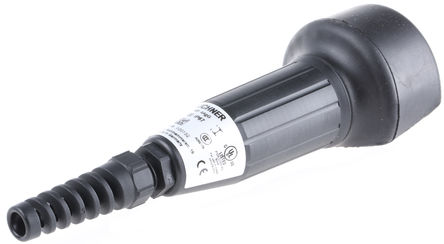
Enabling switches are hand-operated control mechanisms designed for use in hazardous areas of machines and equipment.
In "manual" operating mode, the protective functions of moveable protective devices are overridden under certain conditions. The enabling switch allows authorised personnel to enter danger areas in order to perform programming, set-up, monitoring, maintenance, test and service work.
The patented cables of the enabling switch have shielded single cores, permitting cross-circuit monitoring. The shields are to be connected with the safety earth conductor system of the machine or installation. This enables cross circuits to be identified, for example, during pinching of cables and the controller is immediately turned off through activation of the short-circuit protection. This dispenses with the need for an additional evaluation device for cable monitoring.
Outstanding ergonomics
Low weight
Problem-free gripping during manual changes
Lighter and more stabile pressure point
Secure cable monitoring during cross circuit
Difficult to tamper with
Step 1: OFF function (operating element not pressed)
Step 2: Enabling function (operating element pushed to middle setting)
Step 3: O function with forced opening (operating element pushed completely past the middle
setting)
| Mobile device | Installation kit | |
| ZSA2A4G05A | ZSA1-3 | |
| Casing material: | Plastic | |
| Fastening hole: | D30 in accordance with IEC 94 5-1 | |
| Protection class: | IP67 | |
| Ambient temperature: | 5 °C → +60 °C | |
| Function sequence: | Three-step | Two-step |
| Break-before-make components: | 2 N/O + | 2 N/O + |
| 2 positive break contacts | 1 positive break contact | |
| Switching principle: | Slow-action contact element | |
| Usage category | ||
| In accordance with IEC 947-5-1: | AC-15 Ue 230 V Ie 4 A | |
| Connection type: | 8 x 0.34 mm2 for self-connection |

